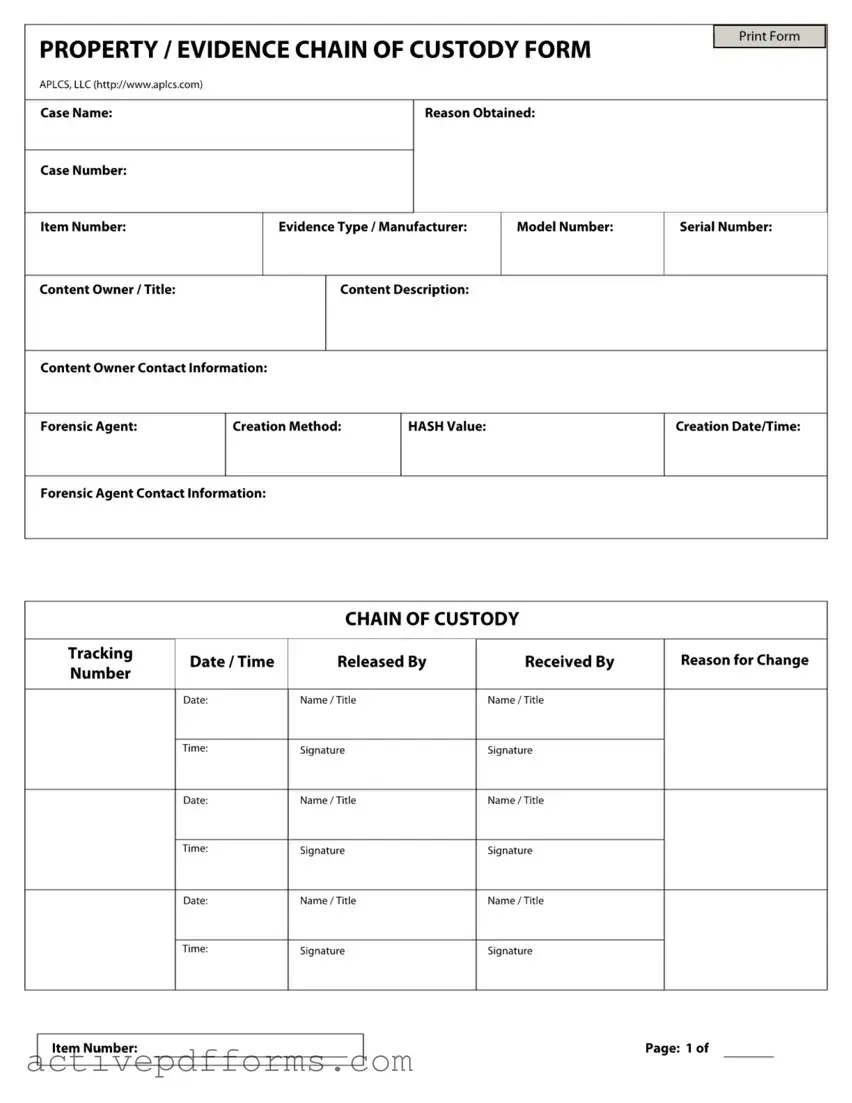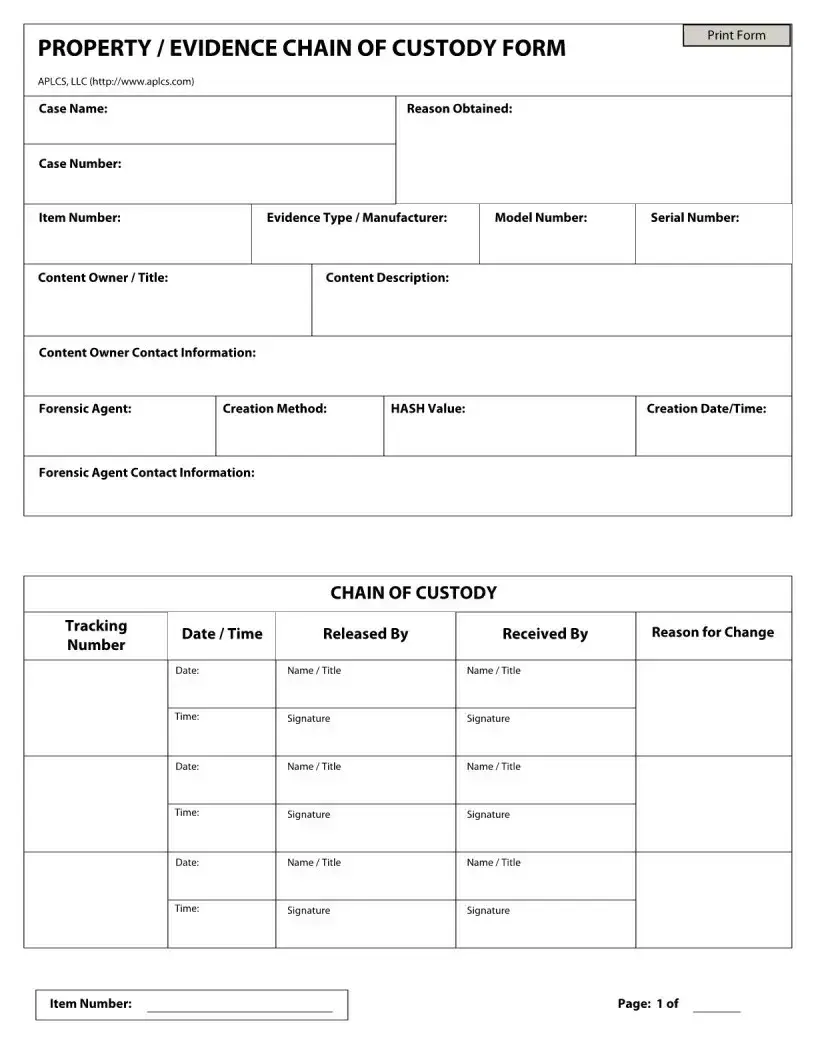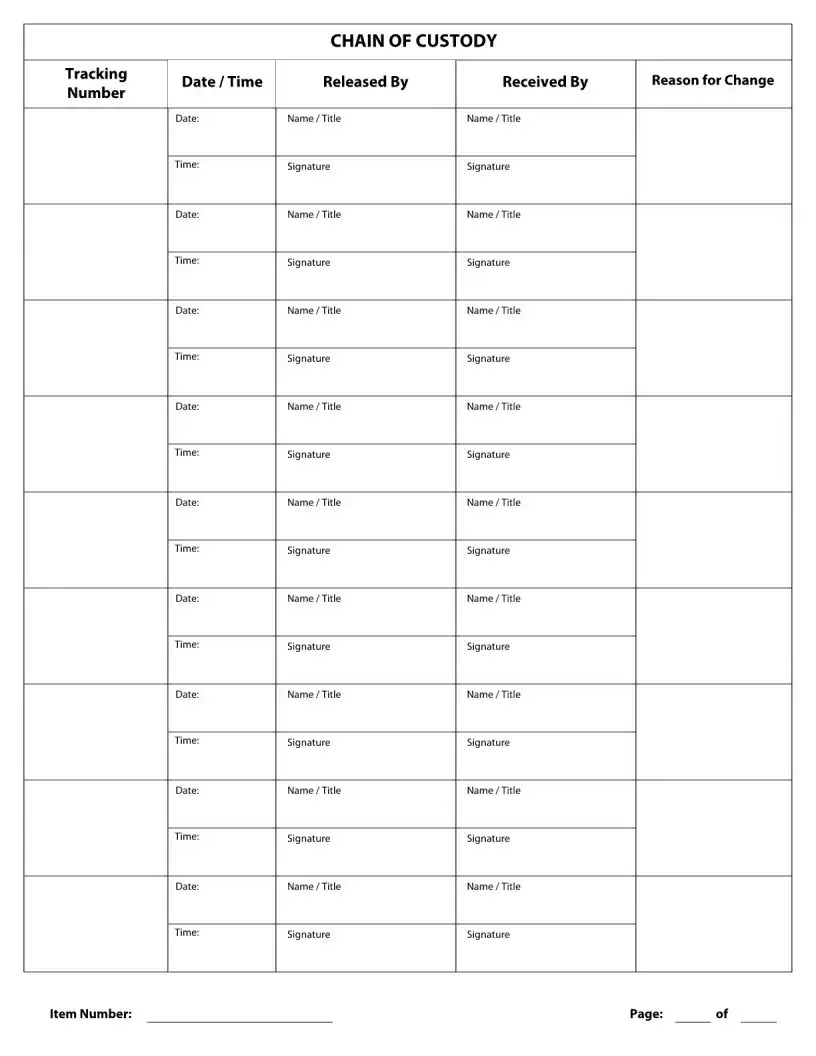What is a Chain of Custody form?
A Chain of Custody form is a document used to keep track of the possession, transfer, and location of evidence. It records every individual who has handled the evidence, the reason for any changes in custody, and the dates and times of those changes. This form is crucial in maintaining the integrity of the evidence for legal proceedings, ensuring that it hasn't been tampered with or compromised.
Why is maintaining a Chain of Custody important?
Maintaining a Chain of Custody is vital for several reasons. First, it ensures the evidence remains credible and is accepted in a court of law. The integrity of the evidence is protected, providing a clear, documented history of its control, transfer, and analysis. This meticulous record-keeping helps in establishing that the evidence has been handled properly and securely throughout its lifecycle, preventing any allegations of tampering or contamination.
What information is included on a Chain of Custody form?
The form includes details such as the case name, reason the evidence was obtained, case and item numbers, type of evidence, manufacturer, model and serial numbers, content owner and their contact information, a description of the content, and the forensic agent's details including the creation method of the form and HASH value. It also records each transfer of custody with the date, time, names, and signatures of the individuals releasing and receiving the evidence, along with the reason for the change.
Who should fill out the Chain of Custody form?
Individuals who are authorized to handle the evidence should fill out the Chain of Custody form. This includes forensic agents, law enforcement officers, laboratory personnel, and any other individuals who have been granted access to the evidence for examination, storage, or transport purposes. These individuals must meticulously record any transfer of custody by logging their actions on the form to maintain its accuracy and completeness.
How does a Chain of Custody form protect evidence?
By providing a detailed record of each person who has handled the evidence and when it was in their possession, a Chain of Custody form helps to protect evidence from being tampered with or contaminated. This detailed tracking builds a trust framework around the handling of the evidence, ensuring that it remains as untainted and as credible as when it was initially obtained. The form acts as a safeguard against potential allegations of mishandling or tampering, which might otherwise compromise the evidence's integrity in legal proceedings.
Can a broken chain of custody impact a legal case?
Yes, a broken chain of custody can seriously impact a legal case. If there are gaps or inconsistencies in the Chain of Custody documentation, the credibility of the evidence could be questioned. Such situations can lead to evidence being deemed inadmissible in court, as there could be doubts regarding its integrity and whether it has been altered or tampered with. A well-maintained Chain of Custody is crucial for ensuring that evidence is considered valid and reliable in judicial processes.
What happens if there are errors in the Chain of Custody form?
If errors are found in the Chain of Custody form, steps should be taken immediately to correct them, if possible, by those who have authorized access and the ability to make corrections. Such errors can range from misspelled names and incorrect dates to incomplete information regarding the transfer of evidence. Depending on the nature of the error, it may require the individual who made the mistake to provide a correction or clarification in writing, ensuring the form is accurate and up-to-date. In some cases, serious errors could necessitate a review of the evidence’s admissibility in legal proceedings.
How long should a Chain of Custody form be retained?
The retention period for a Chain of Custody form depends on the policies of the holding agency and the legal requirements pertaining to the case. Typically, the form should be retained for as long as the evidence is needed, which could be until the conclusion of a legal case, including any potential appeals. Some jurisdictions may have specific retention schedules that dictate how long these forms must be kept, often several years post-case closure, to ensure they are available for review or in case of further legal action.
Are there digital versions of Chain of Custody forms?
Yes, digital versions of Chain of Custody forms are increasingly common, especially with the rise of electronic evidence and digital forensics. These digital forms function similarly to their paper counterparts but are filled out and managed electronically. Such versions can offer enhanced security features, such as digital signatures, time-stamping, and encryption, which help in ensuring the form's integrity and the evidence's security. Additionally, digital forms can simplify the tracking and management process, making it easier to maintain a comprehensive and unbroken chain of custody.


